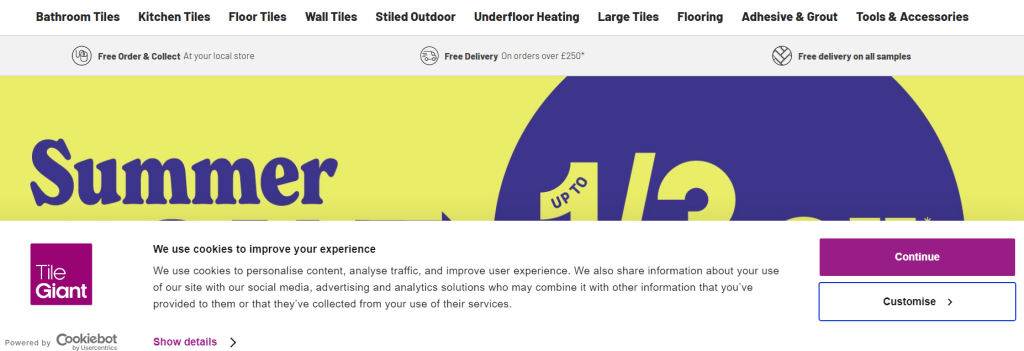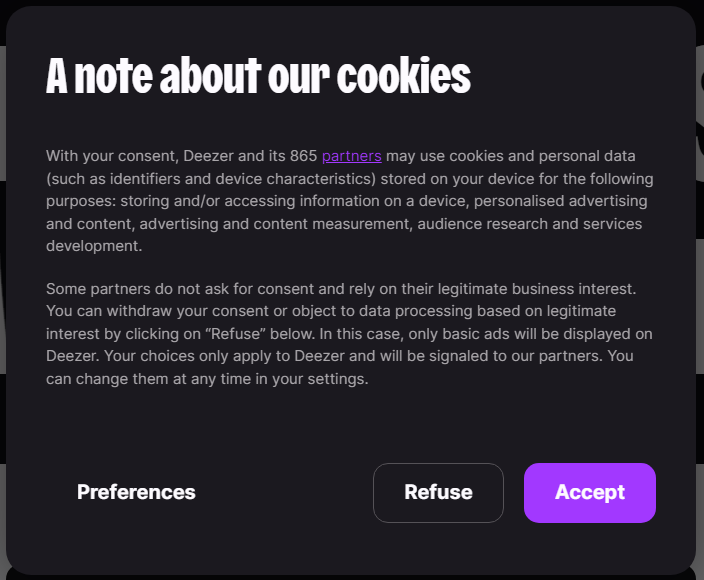GDPR is a data protection and privacy policy enforced by the European Union (EU). If your website handles the personal data of EU citizens, you need to follow GDPR regulations, including GDPR cookie consent.
But what is cookie consent? Simply put, when a user visits a website, they must be informed about types of cookies the website uses and how they’re used. Users are then able to consent to the use of cookies or reject them.
GDPR provides legal guidance on how to process, manage and safeguard the personal data of EU citizens. By establishing these rules and guidelines, organisations can effectively protect personal data, which is considered of utmost importance in consumer protection.
GDPR compliance means ensuring safeguards are in place to protect users’ data and obtaining explicit consent to use cookies. Websites are required to publish privacy notices that let users know what data is being gathered, how it will be used and what rights they have as data subjects. By complying with GDPR, websites demonstrate their commitment to user privacy which builds trust with their audience.
Not complying with the GDPR can have severe repercussions, both in terms of fines and damage to brand reputation. At Proof3 we specialise in creating cookie banners that are brand-compliant, fit for GDPR and won’t negatively affect UX. Get in touch to see how we can help with your cookie banners.
Not all cookie consent banners look the same. Some appear at the bottom of the page, some appear in the header and some appear as a popup.
No matter which cookie consent banner you opt for, they all serve the same GDPR-compliant purpose – to clearly display what cookies are used for. Let’s take a look at how these cookie consent banners differ.
Footer cookie banners are one of the most frequently used cookie banners used on websites, particularly on eCommerce websites. They are particularly well-liked as they don’t obstruct the users attention away from important messaging or promotions on the site.
Additionally, all of the company’s information is available in the footer of the website, so all necessary privacy and compliance information can be found in the same place.

Popup cookie banners are another common banner amongst eCommerce websites as they draw a user’s attention to the popup. Many popup cookie banners feature a range of customisation options for users who want to set their own preferences.

Header cookie banners are less frequently used when compared to other banner types. Although they appear above the navigation where users typically interact with your site, they can disappear when the user scrolls down. This means that you might lose out on serving valuable analytics or advertising cookies to them if they don’t see the consent banner.
Cookie consent banners are typically the user’s first point of contact on your site, so they should look well-organised, be easy to use and include certain components for GDPR compliance. Below, we’ve compiled a list of what a GDPR-compliant cookie consent banner should include:
Clear & concise information: The banner should clearly explain what cookies will be used and what they’re used for. They should avoid using technical terminology that might be difficult to understand.
Option to accept or reject cookies: Users must have the option to accept or reject cookies. They should also have the option to customise their selection at any point.
Differentiate essential and non-essential cookies: Distinguish essential cookies – those without which the website wouldn’t work – and non-essential cookies that are used for analytics or advertising. Note: Essential cookies get a green tick ‘Accept all cookies’ button and non-essential cookies get a blue tick. The user has to click to give their consent to the non-essential cookies, while the essential ones are automatically accepted.
Link to the privacy policy & cookie policy: Detailed information about how data is collected and used should be linked and clearly visible on the cookie banner.
Cookie consent should be renewed when there are significant changes to the types of cookies used or their purposes, the privacy or cookie policies have changed or the user’s consent has expired.
Yes, cookie consent is required for any analytics tool that sets cookies, including Google Analytics. Learn more about the effects of consent on GA4 Analytics here.
Whilst cookie consent is extremely important, it’s important to be aware of other legislations around consent. If you’re an international business in particular dealing with the personal information of users, here are some additional consent legislations to be aware of:
European Union’s GDPR – The General Data Protection Regulation (GDPR) is the toughest privacy and security law in the world. It manages how an organisation processes the data of individual EU citizens.
Brazil’s LGPD – Much like the EU’s GDPR, Brazil’s data protection law requires any organisation collecting and processing personal data to follow its data security rules. LGPD also gives Brazilian residents certain rights over their personal data.
South Africa’s POPIA– The POPIA requires businesses to provide users with a privacy and cookie policy. Businesses must honour if users don’t consent to their data being processed.
Take a look at our blog about the effect of Google Consent Mode V2 on Google Ads & GA4 Analytics to learn more.
